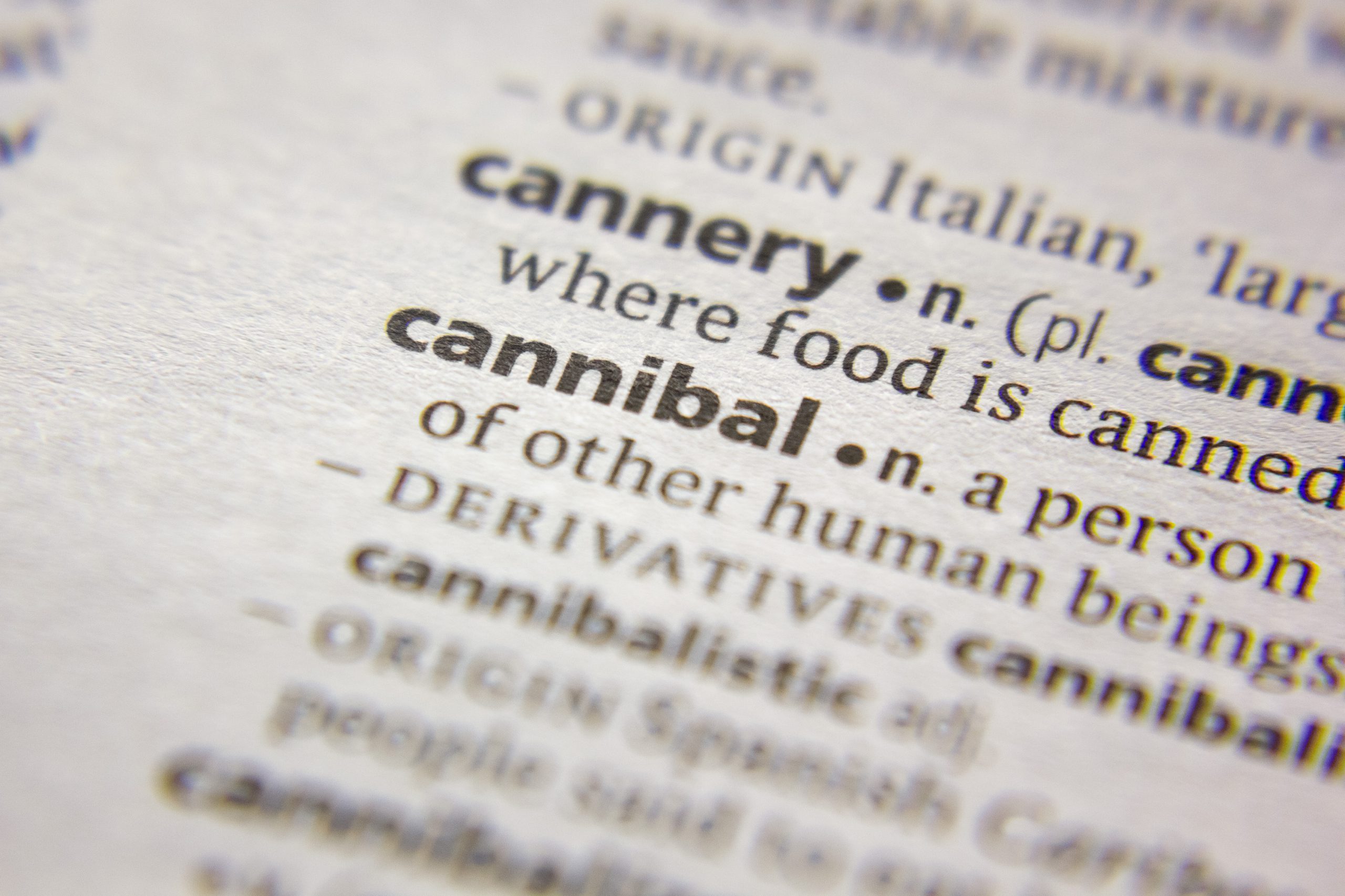

Cannibalism Now? Shock Value and the Value of Bodies
In a culture that has made virtues of deconstructing all moral boundaries and celebrating all desires, it is increasingly difficult to shock anyone.
08/4/22
John Stonestreet Shane Morris

One of the iron laws of popcorn cinema, especially to score the coveted (but ever-more elusive) summer blockbuster status is that there must be sufficient shock value. And one of the iron laws of shock value is that it must always increase. Each new film must outdo the last one.
Take the Jurassic Park series. In the first movie back in 1993, a mere five people were eaten by dinosaurs, all of whom were confined to a tiny island. Fast-forward a few inferior sequels, and a score or more people are gobbled by a host of mutant CGI dinos prowling the entire planet along with giant killer grasshoppers. The lesson is clear: Audiences had already been shocked by dinosaurs coming back to life, and they wanted more. The old thrill would no longer do.
The more this iron law holds across pop culture, the more desensitized we become. Enter another rising entertainment genre more gruesome than dinosaurs eating people. People eating people.
Writing recently in The New York Times, Alex Beggs documented a growing fascination with cannibalism. In the article, Beggs offered a long list of movies, TV shows, and novels in which characters eating one another is a central plot device. The novel A Certain Hunger is “about a restaurant critic with a taste for (male) human flesh.” The Showtime series Yellowjackets is “about a high school women’s soccer team stranded in the woods for a few months too many.” A new show on Hulu called Fresh is about “an underground human meat trade.” Raw is a film about “a vegetarian veterinary student whose taste for meat escalates,” and Bones and All is a movie about “a young love that becomes a lust for human consumption.”
“Turns out,” wrote Beggs, “cannibalism has a time and a place,” and “that time is now.”
What on earth is fueling a sudden fixation with perhaps the oldest and most unsettling of taboos? The writer of one show told the Times: “I feel like the unthinkable has become the thinkable, and cannibalism is very much squarely in the category of the unthinkable.” Another seemed to find the concept potentially appetizing, asking, “what portion of our revulsion to these things is a fear of the ecstasy of them?”
When I first saw the headline for this New York Times story appear in my newsfeed, I thought it was a prank. Apparently, all of these books, movies, and TV shows about cannibalism point to a very real partially popular trend. Why?
Perhaps, in a culture that has made virtues of deconstructing all moral boundaries and celebrating all desires, it is increasingly difficult to shock anyone. Shock value, after all, depends on some sense of what is right and wrong, and even more, what is normal. With sexual and gender identities multiplying daily and more and more people treating the human body as moldable clay without any underlying design or purpose, is it any wonder some are reimagining it as food?
And why shouldn’t they, if human beings are only, as Christian author Glen Scrivener puts it, “mischievous apes?” Chimpanzees routinely kill and eat one another. If we are only advanced animals, it’s difficult to imagine why we humans should have a strong aversion to dining on each other, too. If our bodies are in no way sacred or made for a higher purpose, then not just every sexual appetite, but every appetite must be permissible.
To be clear, I am not suggesting that we are on the cusp of a cannibal rights movement. I certainly hope we are not. The social aversion is extremely strong, as it should be, and has only been broken in a few times and places throughout history. Still, the current flirtations with people-eating in entertainment is a tell-tale sign of a culture that is losing all good aversions.
Like those sub-par Jurassic Park sequels resorting to ever hungrier and bigger dinosaurs, our movies and stories reveal a lost creativity, leaving a culture that must constantly push boundaries. In particular, our gnostic age tends to push the boundaries of how characters think of and use their bodies, and the bodies of others. When it comes to sex, titles like Fifty Shades of Grey and Cuties have already put sadomasochism and the sexual exploitation of children on the menu. In such a culture, a side dish of cannibalism isn’t surprising.
Those who find a worldview in which bodies have no purpose or boundaries a bit nauseating should wonder why. Christians can tell them, and offer the alternative: a worldview in which bodies are sacred, not only because they are part of what it means to be created in God’s image, but because God, Himself assumed a body and gave it for us. Interestingly, Christianity’s early critics alleged that the Lord’s Supper was a form of cannibalism. In fact, it was and is the ultimate reason that the human body is worthy of respect and honor, in the bedroom, at the movies, and even at the table.
Have a Follow-up Question?
Up
Next

Related Content

© Copyright 2020, All Rights Reserved.













